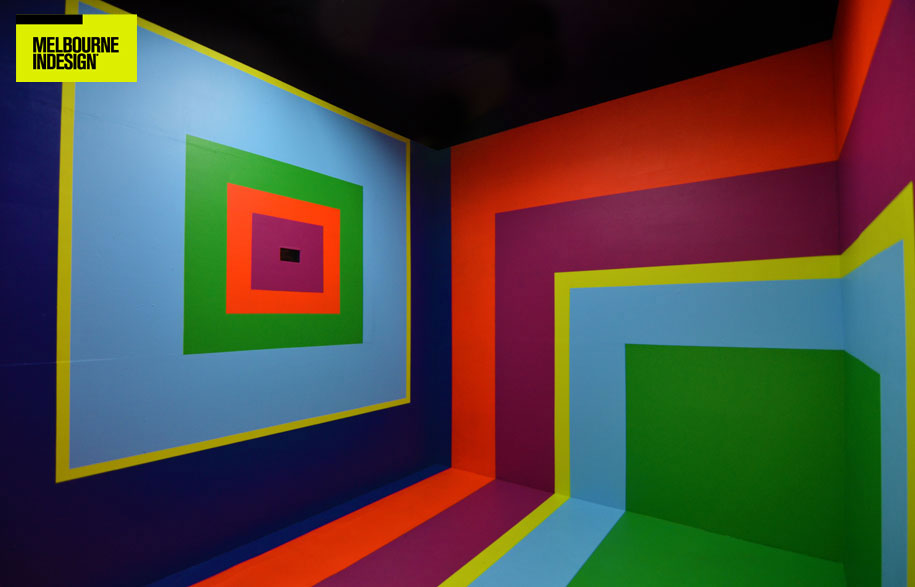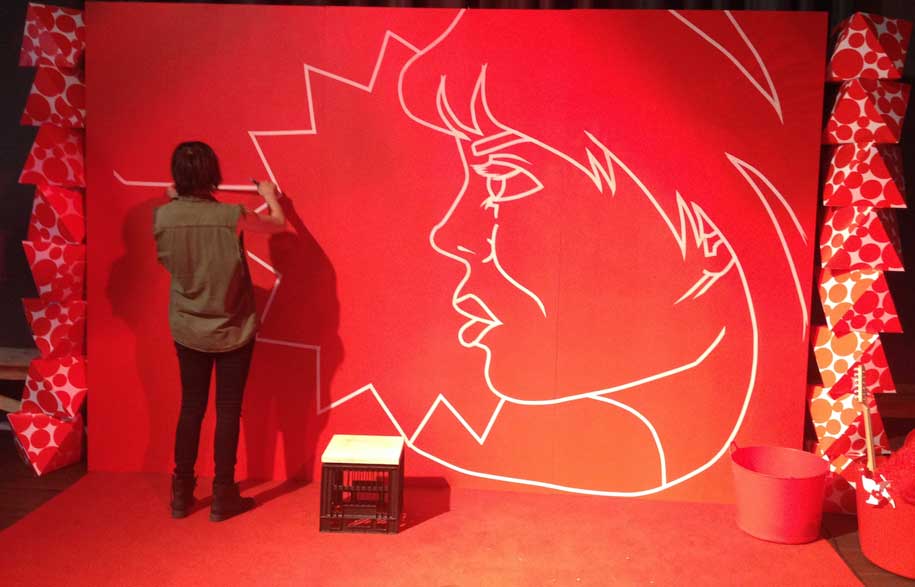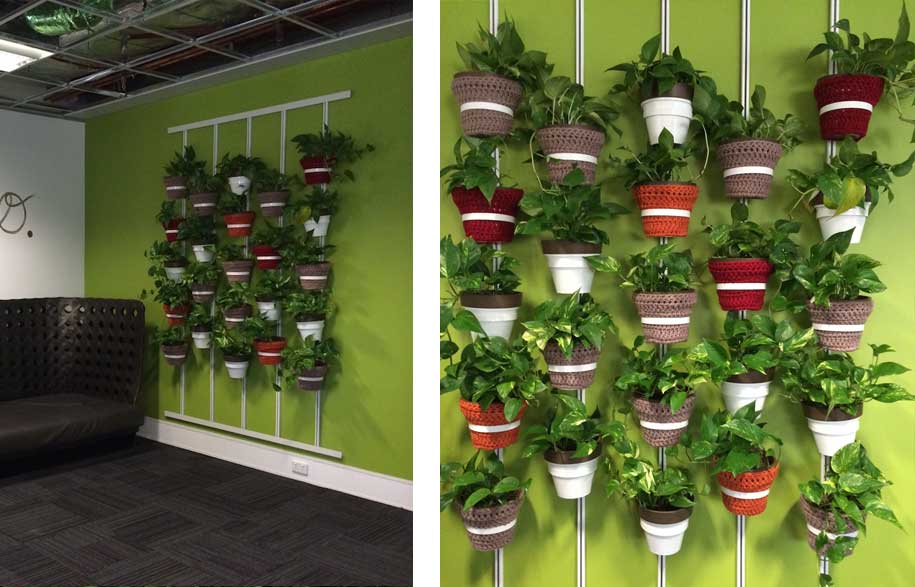Unlike canvas art, or even sculptures where spatial destiny can be of little importance, place is a priority in the creative process of site-specific art and installations. The work is always in play, to varying degrees, with the people who enter the space. And like architecture, such art is very much about human interaction – to be engaged with.
Working with and adapting a space to serve a new function, the two disciplines seem to cross at more than one point. Becoming more widespread, even sought-after by architects and the public alike, site-specific art shows a shift in how we’re interacting with our urban spaces.
Walking around our cities, we experience artworks like this on a regular basis, such as major sculptures by metal artists KORBAN/FLAUBERT or the wonderful guerrilla-style wool installations by Suki. Some are more temporary, such as the bold, saturated painted works by Emma Coulter, or the gritty tape art by Klara (both that you can see in action at Melbourne Indesign in August) – which adds a level of timeliness to the experience.
We’re interested in this spatial-driven art and the creators behind it: what are the motives for making art within a landscape rather than for a white wall? And how do these works play into our lives? We spoke with Emma Coulter, KORBAN/FLAUBERT, Klara and Suki to find out.
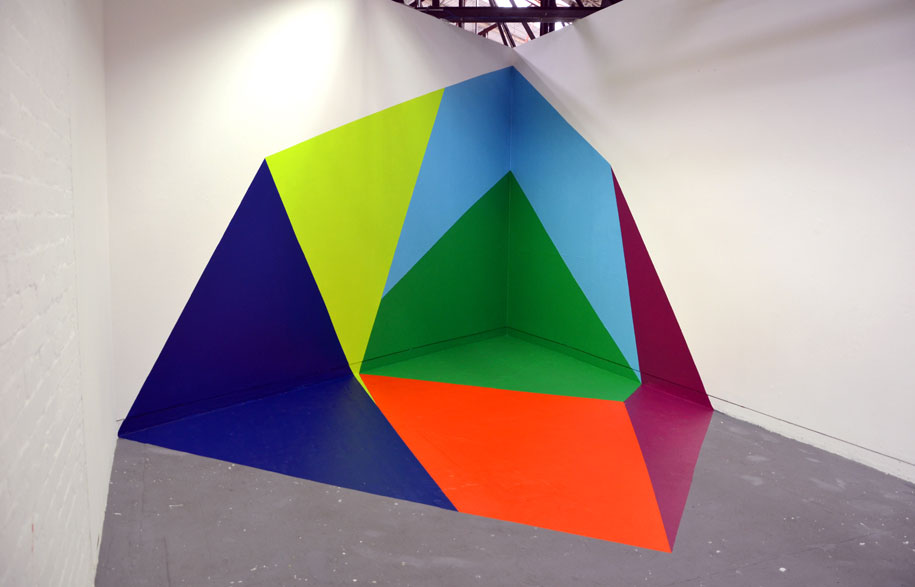
Emma Coulter
“…I’m exploring the boundaries between painting and the built environment through a series of spatial works, which involves the manipulation of two and three dimensional surfaces. Each new spatial project is about responding directly to the site; a unique opportunity to respond to the inherent characteristics, and existing constraints.”
Read the full interview with Emma here
Klara
“There’s a romantic connection between [site and work] that heavily resonates with me and hopefully the viewer also. I’m all about making ideas a reality, thoughts become things. To see a site and have intentions of developing on it and creating something new excites me.”
Read the full interview with Klara here
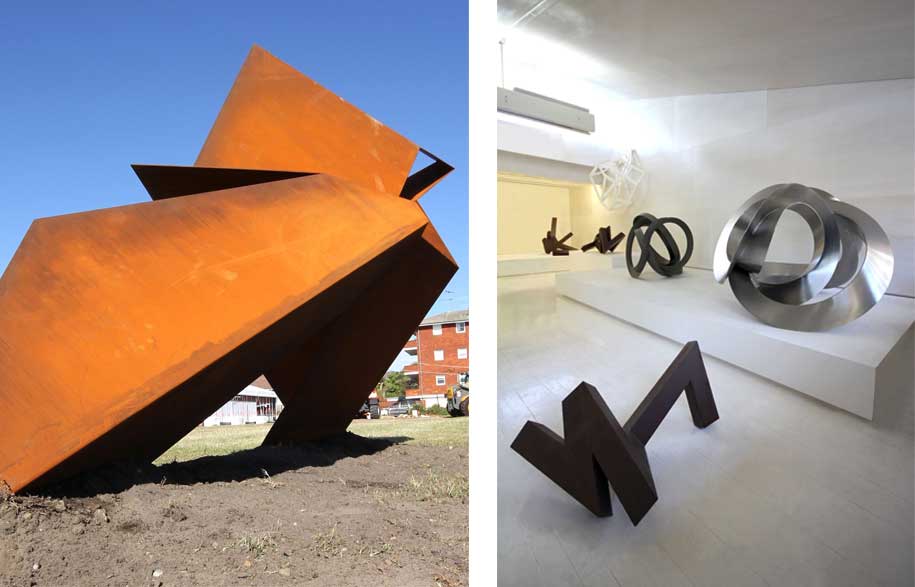
KORBAN/FLAUBERT
“There is a physical response to the perception of movement in sculpture. A sense of physical involvement and unwilled mirroring or imitation (motor simulation).”
Read the full interview with KORBAN/FLAUBERT here
Suki
“I like the idea of art working with and adding to the surroundings, it draws you into the environment and helps you to appreciate the quiet beauty of the landscape.”
Read the full interview with Suki here
![MelbourneIndesign_logo[1]](https://cdn.habitusliving.com/wp-content/uploads/MelbourneIndesign_logo1.jpg)

